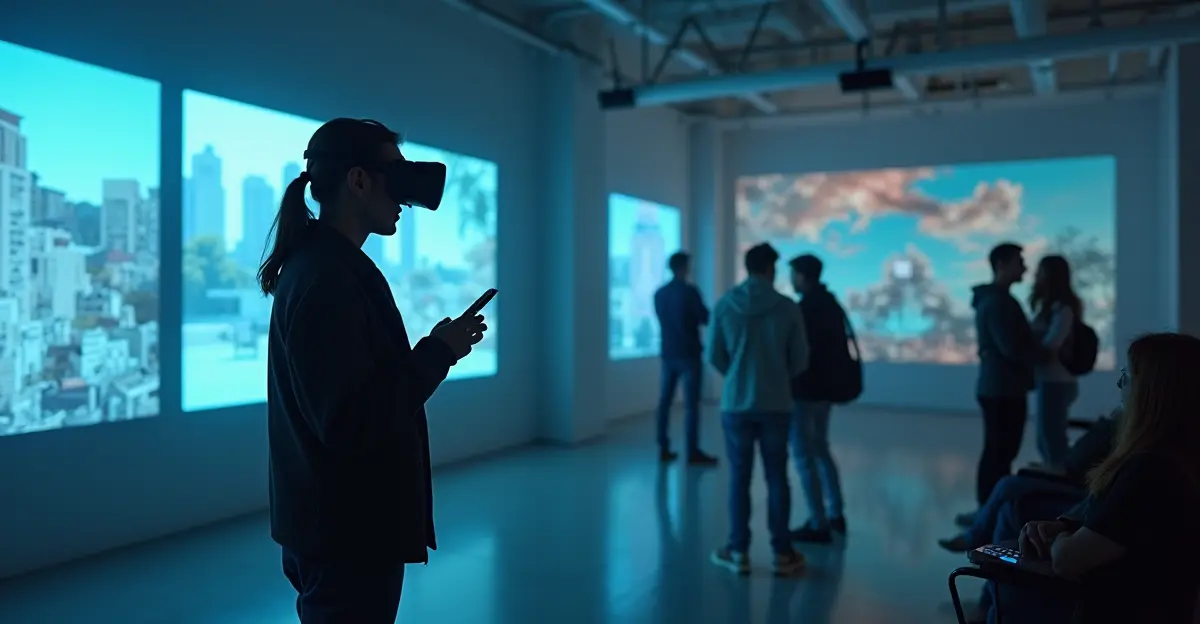Virtual reality therapy gains mainstream acceptance for treating anxiety, phobias, and PTSD through controlled virtual environments. Recent studies show 90% success rates for certain phobias, with insurance coverage expanding significantly since 2023.

Virtual Reality Therapy Transforms Mental Healthcare
Virtual reality therapy (VRT) is rapidly gaining mainstream acceptance as an evidence-based treatment for mental health conditions, with recent studies demonstrating significant reductions in anxiety and phobia symptoms through controlled virtual environments. This innovative approach represents a paradigm shift in how clinicians address conditions ranging from specific phobias to post-traumatic stress disorder (PTSD).
How VR Therapy Works
Virtual reality therapy uses specially programmed computers and visual immersion devices to create simulated environments that help patients confront their fears in a controlled, safe setting. 'The beauty of VR therapy lies in its ability to create realistic scenarios that would be difficult or impossible to replicate in traditional therapy settings,' explains Dr. Sarah Chen, a clinical psychologist specializing in anxiety disorders. 'Patients can gradually expose themselves to their fears without the real-world risks, which dramatically improves treatment adherence and outcomes.'
The technology ranges from simple PC setups to advanced virtual reality headsets, allowing therapists to customize environments based on individual patient needs. According to research published in MDPI's Journal of Clinical Medicine, VR exposure therapy (VRET) creates controlled, immersive environments that enable patients to safely confront their fears through gradual desensitization.
Clinical Evidence and Applications
Recent clinical trials have demonstrated VR therapy's effectiveness across multiple mental health conditions. A comprehensive review in PubMed shows VRET is well-accepted and superior to waitlist conditions, particularly for phobias, social anxiety, and PTSD. The technology has proven especially valuable for treating specific phobias including acrophobia (fear of heights), arachnophobia (fear of spiders), and social anxiety disorders.
'We're seeing cure rates around 90% for certain phobias using VR therapy, often at about half the cost of traditional cognitive behavior therapy,' notes Dr. Michael Rodriguez, director of the Virtual Reality Therapy Institute. 'The ability to replay virtual scenes with adjustments allows us to precisely target each patient's specific triggers and response levels.'
Beyond phobia treatment, VR therapy shows considerable promise for PTSD treatment, where there simply aren't enough psychologists and psychiatrists to treat all veterans with anxiety disorders related to their military service. The technology allows soldiers to gradually confront combat-related trauma in a safe, controlled environment.
Insurance Coverage and Accessibility
The growing acceptance of VR therapy is reflected in significant advancements in insurance coverage. According to data from Floreo VR, nearly 50,000 reimbursement claims have been filed since 2023 using the American Medical Association's CPT-III code for VR-based behavioral therapy. This temporary Category III code, approved in 2023, represents a historic first in digital therapeutics and provides a structured reimbursement pathway with major insurers including Cigna, Blue Cross Blue Shield, Kaiser Permanente, and UnitedHealthcare.
'The surge in reimbursement claims signals growing confidence from both clinicians and payers in VR therapy as an evidence-based intervention,' states healthcare policy analyst Jennifer Martinez. 'Over 85 healthcare plans across all 50 states have established reimbursement rates, making this technology increasingly accessible to patients.'
Future Directions and Challenges
While VR therapy shows tremendous promise, challenges remain. A recent systematic review notes limitations including limited comparison to standard treatments and lack of standardized VRET protocols, which affects translatability. However, innovations continue to emerge, including successful self-directed VRET programs and augmentation with neuromodulation.
Research from Frontiers in Psychiatry demonstrates how VR is being integrated with Acceptance and Commitment Therapy (ACT) for depression treatment, incorporating gamification and multimodal arts strategies to enhance user engagement.
'We're at the beginning of a revolution in mental healthcare,' concludes Dr. Chen. 'VR therapy combines the precision of technology with the art of psychotherapy, creating opportunities for treatment that were unimaginable just a decade ago. As standardization improves and costs decrease, this approach will become increasingly central to mental health treatment worldwide.'

 Nederlands
Nederlands
 English
English
 Deutsch
Deutsch
 Français
Français
 Español
Español
 Português
Português



